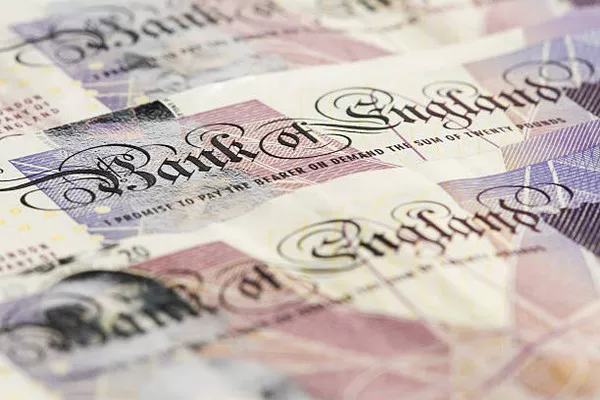Monetary policy plays a crucial role in shaping the economic landscape of a country, influencing various aspects such as inflation, employment, and economic growth. In the United Kingdom, the Bank of England (BoE) is responsible for formulating and implementing monetary policy. This comprehensive guide explores how the Bank of England’s monetary policy decisions impact the British Pound (GBP).
Introduction to Monetary Policy
Monetary policy refers to the actions undertaken by a central bank, such as the Bank of England, to control the supply of money, interest rates, and inflation in an economy. These policies are designed to achieve specific macroeconomic objectives, including price stability, full employment, and sustainable economic growth.
Objectives of the Bank of England’s Monetary Policy
The primary objectives of the Bank of England’s monetary policy are:
Price Stability: Maintaining low and stable inflation, typically set at a target of 2% Consumer Price Index (CPI) inflation.
Supporting Economic Growth: Promoting sustainable economic growth and employment while avoiding overheating or recessionary pressures.
Financial Stability: Ensuring the stability of the financial system to support economic activity and mitigate systemic risks.
Tools of Monetary Policy
The Bank of England utilizes several tools to implement monetary policy effectively:
1. Interest Rates
Base Rate: The Bank of England sets the base rate, which influences the cost of borrowing and lending throughout the economy.
Influence on Exchange Rates: Changes in interest rates can impact foreign exchange markets, affecting the demand for and supply of the British Pound (GBP).
2. Quantitative Easing (QE)
Asset Purchases: The BoE may purchase government bonds and other financial assets to increase the money supply and lower long-term interest rates.
Impact on Currency: QE can affect the exchange rate by altering the attractiveness of holding GBP-denominated assets relative to other currencies.
3. Forward Guidance
Communications Strategy: The BoE provides forward guidance on its future monetary policy intentions, helping shape market expectations and behavior.
Expectations on Rates: Forward guidance influences interest rate expectations, which can impact currency exchange rates.
How Monetary Policy Decisions Impact the Pound
The Bank of England’s monetary policy decisions have significant implications for the value and stability of the British Pound:
1. Inflation Targeting
Impact on Exchange Rates: By maintaining low inflation through interest rate adjustments, the BoE aims to stabilize the purchasing power of the Pound. Higher interest rates can attract foreign capital inflows, strengthening the Pound.
Trade Balance: A stronger Pound can reduce import prices, potentially lowering inflation, but it may also harm export competitiveness, affecting the trade balance.
2. Interest Rates and Exchange Rates
Direct Effect: Changes in the base rate directly impact short-term interest rates, influencing capital flows and the demand for GBP.
Market Sentiment: Interest rate changes signal the BoE’s stance on economic conditions, affecting investor confidence and the Pound’s valuation.
3. Quantitative Easing (QE)
Money Supply: QE increases the money supply, lowering long-term interest rates and potentially depreciating the Pound if investors seek higher returns abroad.
Investor Sentiment: QE can improve market liquidity and investor sentiment, supporting asset prices including the Pound.
4. Economic Growth and Employment
Overall Impact: Monetary policy that supports economic growth and employment can boost consumer and business confidence, potentially strengthening the Pound due to increased economic activity.
Risk Appetite: Improved economic conditions can attract foreign investment, benefiting the Pound’s valuation.
Case Studies and Examples
1. Brexit and the Pound
Impact of Uncertainty: The uncertainty surrounding Brexit negotiations influenced the Pound’s volatility, with monetary policy adjustments aimed at stabilizing the economy.
Market Reactions: BoE interventions and policy adjustments helped mitigate immediate volatility and support economic stability during the Brexit transition period.
2. COVID-19 Pandemic Response
Monetary Response: The BoE’s rapid interest rate cuts and QE expansion during the COVID-19 pandemic aimed to support economic recovery, affecting the Pound’s valuation amid global uncertainty.
International Comparisons: Comparison with other central banks’ responses highlighted the Pound’s resilience relative to other major currencies.
Challenges and Considerations
1. Policy Effectiveness
Transmission Mechanisms: Assessing the effectiveness of monetary policy transmission channels in influencing the Pound and achieving economic objectives.
Global Factors: Consideration of global economic conditions, trade dynamics, and geopolitical events impacting the Pound’s valuation.
2. Future Outlook
Inflation Expectations: Monitoring inflation expectations and adjusting policy settings to maintain price stability while supporting economic growth.
External Shocks: Preparedness for external shocks and unforeseen events influencing the Pound’s stability and economic outlook.
See Also: When Was the British Pound the Weakest?
Conclusion
The Bank of England’s monetary policy decisions are instrumental in shaping the value and stability of the British Pound (GBP). Through interest rate adjustments, quantitative easing, and forward guidance, the BoE seeks to achieve price stability, support economic growth, and maintain financial stability. As global economic conditions evolve, understanding the impact of these policies on the Pound remains crucial for businesses, investors, and policymakers alike. By navigating the complexities of monetary policy, the BoE plays a pivotal role in shaping the UK’s economic landscape and the international standing of the British Pound.


